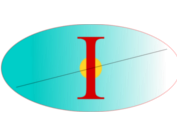Citation:
| paul2010.pdf | 1021 KB |
Abstract:
We study the photodissociation of the H+2 molecule by ultrashort Fock-state electromagnetic pulses (EMPs). We use the Born-Oppenheimer treatment combined with an explicit photon number representation via diabatic electrophoton potential surfaces for simplification of the basic equations. We discuss the issue of the number of photon states required and show that six photon states enable good accuracy for photoproduct kinetic energies of up to 3 eV. We calculate photodissociation probabilities and nuclear kinetic-energy (KE) distributions of the photodissociation products for 800 nm, 50-TW/cm2 pulses. We show that KE distributions depend on three pulse durations of 10, 20, and 45 fs and on various initial vibrational states of the molecule. We compare the Fock-state results to those obtained by “conventional,” i.e., coherent-state, laser pulses of equivalent electric fields and durations. The effects of the quantum state of EMPs on the photodissociation dynamics are especially strong for high initial vibrational states of H+2. While coherent-state pulses suppress photodissociation for the high initial vibrational states of H+2, the Fock-state pulses enhance it.
Notes:
RBaer-Publication



